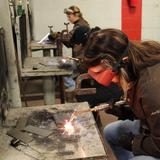- Hennepin Technical College's mission is to provide quality technical education needed for employment in an ever-changing global work environment.
School Highlights
Hennepin Technical College serves 5,992 students (26% of students are full-time).
The college's student:teacher ratio of 20:1 is lower than the state community college average of 22:1.
Minority enrollment is 52% of the student body (majority Black), which is more than the state average of 42%.
Quick Stats (2025)
- Enrollment: 5,992 students
- In-state tuition: $174
- Out-state tuition: $174
- Acceptance Rate: 100%
- Student:teacher ratio: 20:1
- Minority enrollment: 52%
- Source: Integrated Postsecondary Education Data System (IPEDS)
School Overview
The teacher population of 300 teachers has stayed relatively flat over five years.
Hennepin Technical College
(MN) Community College Avg.
Carnegie Classification
Associate's Colleges: High Career & Technical-Mixed Traditional/Nontraditional
Associate's Colleges: Mixed Transfer/Career & Technical-Mixed Traditional/Nontraditional
Institution Level
At least 2 but less than 4 years
At least 2 but less than 4 years
Institution Control
Public
Public
Total Faculty
300 staff
153 staff
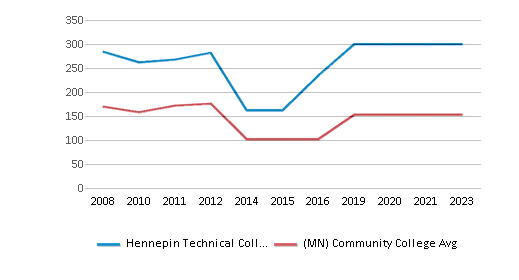
School Calendar
Student Body
The student population of Hennepin Technical College has grown by 29% over five years.
The student:teacher ratio of 20:1 has increased from 14:1 over five years.
The Hennepin Technical College diversity score of 0.70 is more than the state average of 0.63. The school's diversity has grown by 5% over five years.
Total Enrollment
5,992 students
2,555 students
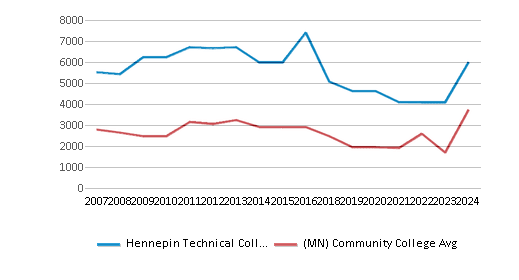
Student : Teacher Ratio
20:1
22:1
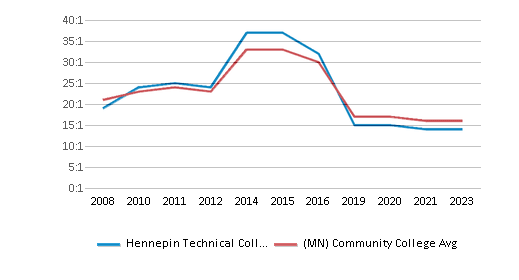
# Full-Time Students
1,551 students
915 students
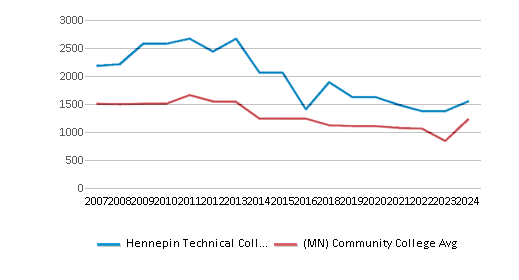
# Part-Time Students
4,441 students
1,808 students
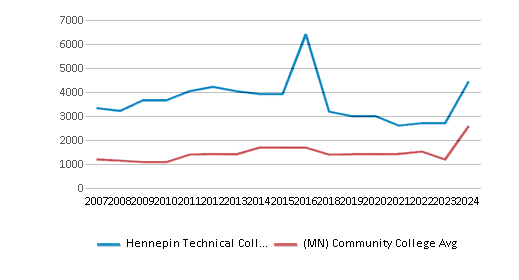
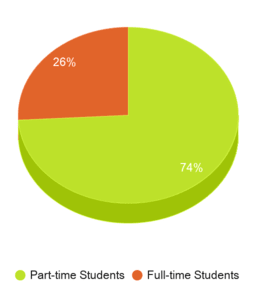
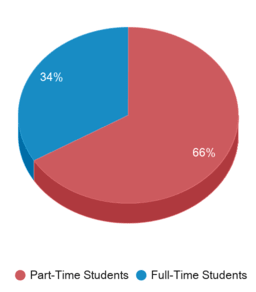
# Enrollment Undergraduate
599 students
372 students
# Full-Time Undergraduate Students
1,551 students
842 students
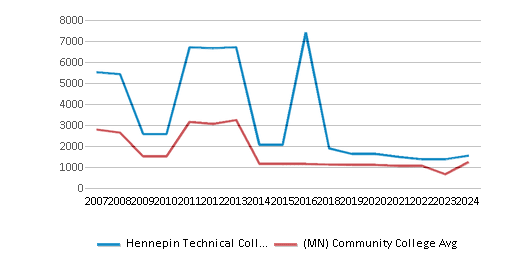
# Full-Time Graduate Students
n/a
38 students
# Part-Time Undergraduate Students
4,441 students
1,771 students
# Part-Time Graduate Students
n/a
12 students
Total Dormitory Capacity
n/a
116 students
% American Indian/Alaskan
n/a
1%
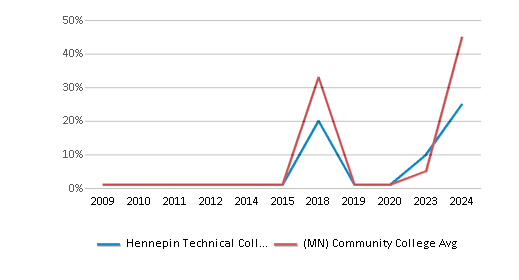
% Asian
9%
6%
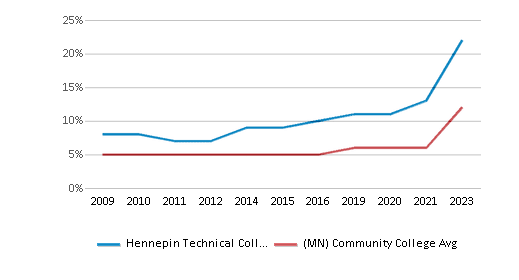
% Hispanic
10%
8%
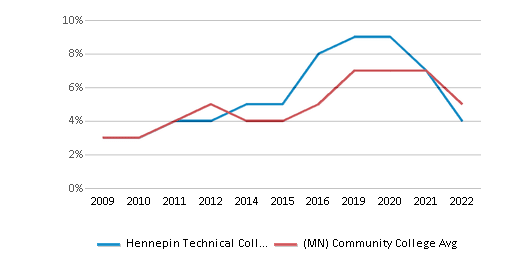
% Black
23%
15%

% White
48%
58%
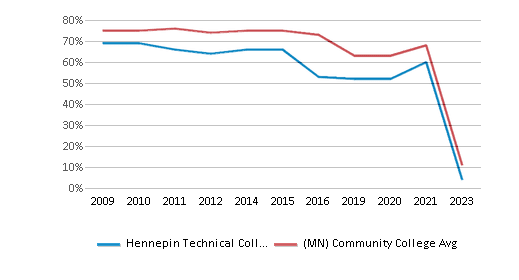
% Hawaiian
n/a
1%
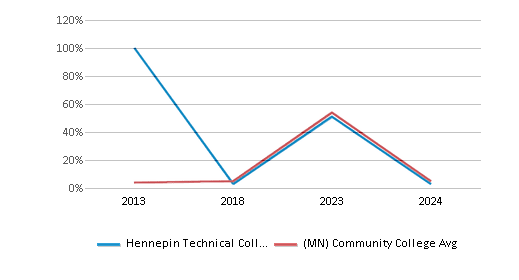
% Two or more races
5%
4%
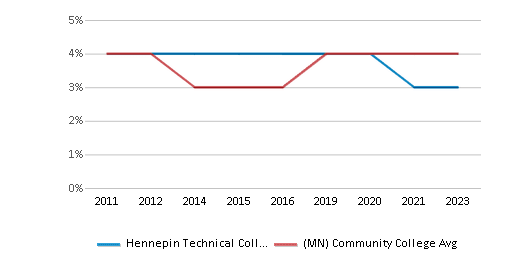
% Non Resident races
1%
1%

% Unknown races
4%
6%
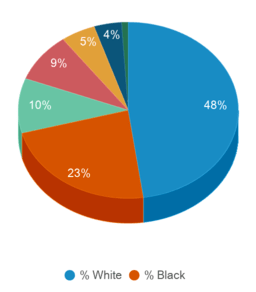
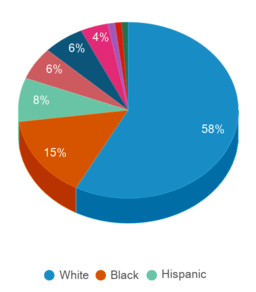
Diversity Score
0.70
0.63
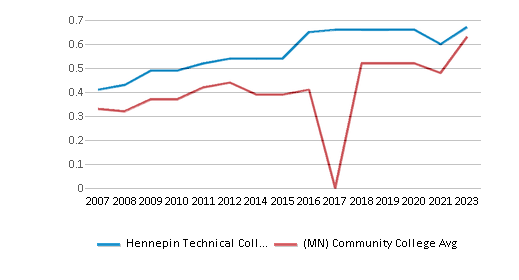
College Completion Rate (Students who graduate in less than 4 years)
0.3297%
0.3421%
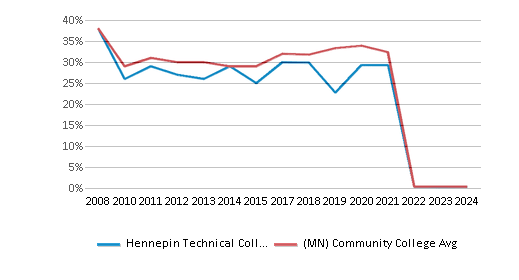
College Completion Rate (Students who graduate in 4 years or more than 4 years)
n/a
0.5652%
Average Graduate Earnings (10 Years)
$34,800
$36,900
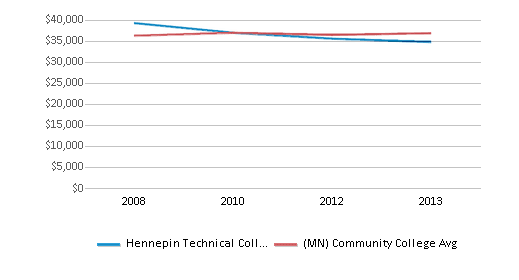
Tuition and Acceptance Rate
The public in-state tuition of $174 is less than the state average of $5,489. The in-state tuition has declined by 96% over four years.
The public out-state tuition of $174 is less than the state average of $6,145. The out-state tuition has declined by 96% over four years.
In-State Tuition Fees
$174
$5,489
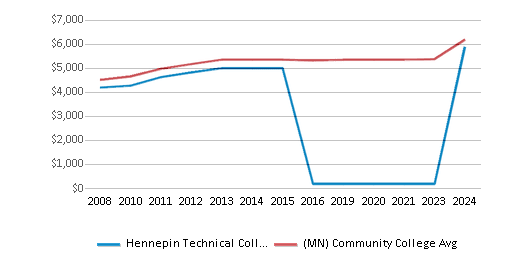
Out-State Tuition Fees
$174
$6,145
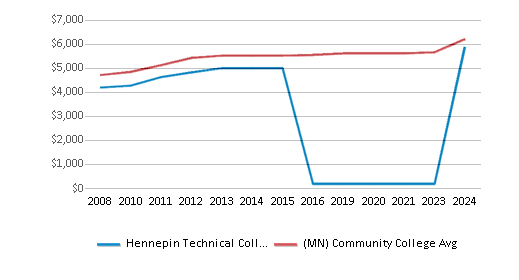
% Students Receiving Some Financial Aid
63%
89%
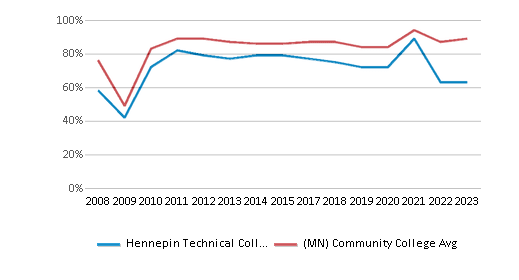
Median Debt for Graduates
$11,713
$12,264
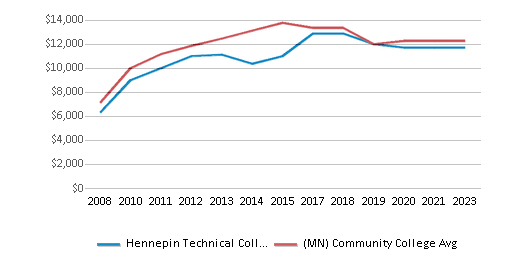
Median Debt for Dropouts
$9,500
$6,747
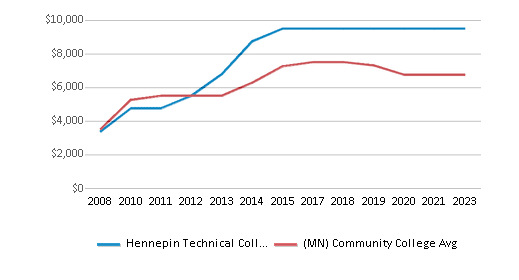
Acceptance Rate
100%
94%
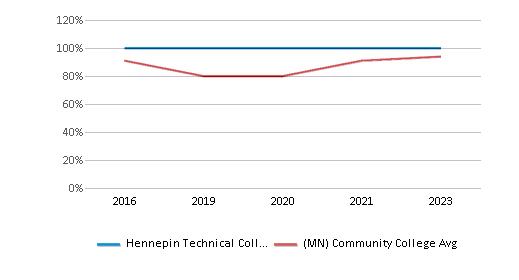
SAT Reading
n/a
625
SAT Math
n/a
600
SAT Writing
n/a
565
ACT Composite
n/a
24
ACT English
n/a
24
ACT Math
n/a
23
ACT Writing
n/a
8
Extracurriculars
Total ExtracurricularsTotal Extra-curric.
11 extracurriculars
ExtracurricularsExtra-curric.
Club or Organization:
Anime Club, Audio Club, Dental Assistant, Fluid Power Club, HTC IOPP Student Chapter, Phi Theta Kappa Honor Society, SkillsUSA, Student Ambassadors, Student Nurses Who Care, Student Senate, Veterans Club
Anime Club, Audio Club, Dental Assistant, Fluid Power Club, HTC IOPP Student Chapter, Phi Theta Kappa Honor Society, SkillsUSA, Student Ambassadors, Student Nurses Who Care, Student Senate, Veterans Club
Source: 2024 (or latest year available) Integrated Postsecondary Education Data System (IPEDS) , School Administrators
School Notes
- The main goal of Hennepin Technical College (HTC) is to provide educational opportunities for employment for people of all ages and from all walks of life. Campuses located in the suburban communities of Brooklyn Park and Eden Prairie provide students with over 150 awards to choose from. Students can attend college part-time or full-time. Courses are offered in many career majors during the day, as well as, during the evenings, and on weekends. Workforce education division offers training for business and industry throughout the metro area. Students who attend HTC come with varied backgrounds and average age is 29. Some have no prior job or college experience, some have attended other schools, some are training for a new career, and others are upgrading their skills for career advancement. All students have one thing in common-they are receiving an education that will help them become more employable. Hennepin Technical College is accredited by the Higher Learning Commission (HLC).
Frequently Asked Questions
How much does Hennepin Technical College cost?
Hennepin Technical College's tuition is approximately $174 for In-State students and $174 for Out-State students.
What is the acceptance rate of Hennepin Technical College?
The acceptance rate of Hennepin Technical College is 100%, which is higher than the state average of 94%.
Recent Articles

Obtaining Your Bachelor's Degree at a Community College
Explore the evolving landscape of community colleges offering bachelor's degrees, addressing affordability, accessibility, and workforce needs.

A to Z of Community College Certificates and Courses
From business and healthcare to technology and skilled trades, the article showcases the breadth of options available to students seeking to enhance their knowledge, develop new skills, or pursue career advancement.

What is a Community College?
This comprehensive guide explains what a community college is, its history, and its role in higher education. It covers the types of programs offered, differences from four-year colleges, benefits of attending, and important considerations for prospective students, providing valuable insights for those exploring educational options.

